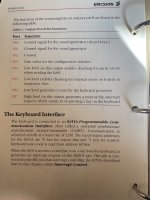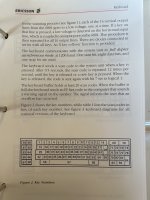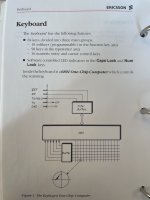sergey
Veteran Member
ExPLIT got a bit of a puzzle for me... His colleague has an Ericsson PC, and they tried to run my 8088 BIOS on it.
Everything seems to work fine, except of the keyboard.
I partially disassembled the INT 9/IRQ1 interrupt handler, and apart from typical PC/XT interaction with the 8255 PPI I/O ports 60h and 61h, there is something going on with port 71h...
Looking closer at the board, I spotted the 8251 USART next to the 8255 PPI. That USART is an unusual thing in an IBM PC/XT compatible. It should be noted that in addition to it, the computer has 8250 UART that is obviously used for the on-board serial port.
So, my suspicion now is that this computer uses the 8251 USART to interface with the keyboard.
Before I go any deeper into disassembling the original BIOS and studying the PCB layout to understand how the keyboard is interfaced, perhaps someone has already figured it all out?
Are there any documents or schematic available for that computer?
Everything seems to work fine, except of the keyboard.
I partially disassembled the INT 9/IRQ1 interrupt handler, and apart from typical PC/XT interaction with the 8255 PPI I/O ports 60h and 61h, there is something going on with port 71h...
Looking closer at the board, I spotted the 8251 USART next to the 8255 PPI. That USART is an unusual thing in an IBM PC/XT compatible. It should be noted that in addition to it, the computer has 8250 UART that is obviously used for the on-board serial port.
So, my suspicion now is that this computer uses the 8251 USART to interface with the keyboard.
Before I go any deeper into disassembling the original BIOS and studying the PCB layout to understand how the keyboard is interfaced, perhaps someone has already figured it all out?
Are there any documents or schematic available for that computer?




